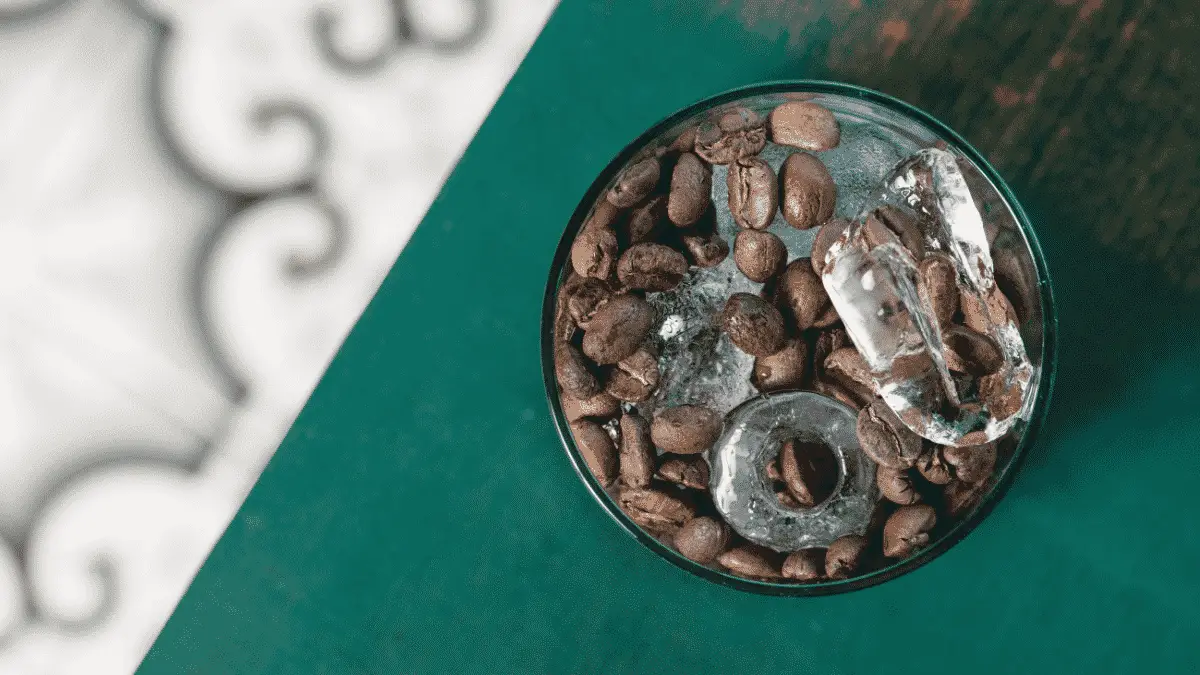As anyone who has recently been to a coffee shop or browsed the aisles of their local supermarket will know, there are dizzying arrays of coffee beans, blends, and roasts on offer today. Coffee lovers are spoilt for choice; whether you’re a fan of single origin beans or arabica blends, or if you like your beans lightly toasted or dark roasted, the options are endless.
So when it comes to coffee roasts, which is the best type for cold brew coffee? Given that the cold brewing method brings out some of the richer, deeper notes in your coffee, without any of the bitterness, a medium or dark roast works brilliantly for cold brew.
Of course if you can’t live without your light roast, it is definitely possible to use it to make cold brew. However, some of the brighter, fruitier flavors that you know and love might not be as pronounced as you are used to.
Different types of coffee roasts
The smell of freshly roasted coffee is one of life’s great pleasures, and anyone who calls themselves a caffeine enthusiast will be familiar with that rich scent and incredible aroma.
What you might not be familiar with however, is the science behind roasting coffee beans. Because it is indeed a type of science. There are a multitude of different ways to roast coffee beans, and almost every producer and roaster will have their own way of doing it.
Despite this, we can still apply a broad classification to coffee roasts to distinguish them from one another. In the most basic terms, coffee roasts will range from light to dark. Which of these types of roasts you prefer will depend on the flavors, notes, and aromas that you prefer in your coffee.
Light roast – the first crack
Coffee beans begin their life as a small, green bean. In this state, they can not be used to make coffee and must be roasted before they can be deemed to be edible. The first stage of roasting at which coffee beans are considered suitable for use is called a light roast, also known as a first crack.
The first crack nickname refers to the cracking sound that coffee beans make as they expand during the roasting process. Beans at this stage of the roasting process are now considered to be fit for consumption, and can be used for making coffee.
Light roast beans will have a pale brown, dry appearance, with no sign of oil on the surface of the bean. Their flavor profile is slightly more acidic, with strong floral and fruity notes, and is most suitable for milder types of coffee.
Medium roast
As the roasting process continues, further flavor profiles begin to develop and the acidity of the beans drop. A medium roast will have a fuller, richer flavor than a light roast, while still retaining fruity notes.
Slightly darker in appearance than a light roast, medium roast coffee also boasts a stronger aroma. Similarly to its light roast sibling however, a medium roast coffee bean will have no visible oil on its surface.
Medium roast coffee is one of the most popular types of coffee in the world today. It is commonly used in cafe and home blends, and is preferred for its fine balance of acidity and aroma, as well as its fuller taste.
Medium dark roast
Medium dark roast coffee is when we start to see oils appear on the surface of the coffee bean. It is a heavily aromatic bean, and will have a pronounced, rich smell.
As the name might suggest, medium dark roast coffee is a much deeper brown color. The longer roasting time not only brings out this darker color, but also eliminates any remaining traces of acidity that the beans might have possessed.
The flavor profile of medium dark roast coffee is rich and robust, with a slight hint of a bitter aftertaste. With caramel and chocolate undertones, this roast type pairs well with milk and cream, making it a very popular choice in cafes around the world.
Dark roast
In a dark roast coffee, the oils within the coffee bean have come fully to the surface, resulting in a dark brown, shiny coffee bean. Due to the longer roasting time, these beans have a rich flavor and aroma, with more pronounced bitterness and extremely low acidity.
As with medium roast coffee, the notes of chocolate, nuts and caramel mean that dark roast coffee is very well suited to milk-based coffees such as lattes and cappuccinos. The richness of the dairy can also help downplay any excess bitterness that dark roast coffee might give off.
The main downside to dark roast coffee is that the longer, hotter roasting process also tends to remove some of the more complex flavors that the bean may have originally possessed. With a plethora of high quality, premium beans on the market today, dark roast is not usually as sought after for this very reason.
The second crack
The second crack is very similar to the first crack in that it represents an audible cracking sound that occurs during the roasting process. Instead of representing the coffee bean reaching an ‘edible’ status, the second crack represents the moment that the oils in the bean begin to migrate to the surface.
While the second crack is a softer sound than the first crack, it is just as important to the flavor profile of the coffee. With the second crack, the flavors of the roast itself begin to intermingle with the flavors of the coffee beans. This is where the deeper flavors and aromas take hold.
Striking a fine balance between the interplay of these two flavor types is something many coffee roasters strive for to maximize the taste and profile of their coffee.
Which roast has the most flavor?
Throughout the roasting process, various flavors come to the fore. On the lighter end of the roasting spectrum, the flavor of the bean itself is most pronounced. As the roast becomes darker, the roasting process will begin to lend flavor to the beans.
A lighter roast which favors the notes and flavors of the bean will have fruiter, floral elements with a higher acidity. A darker roast will have deeper, robust notes of chocolate and caramel, with greater bitterness.
So which of the two is the most flavorful?
As it turns out, neither.
The most flavorful roast will consist of elements from both ends of the spectrum. Medium roast and medium dark roast coffees toe this line well. They each allow the brighter, lighter notes of the bean to shine through, while layering over the rich, full flavor that can only be achieved through the longer, hotter roasting process.
As the oils of the coffee bean have an important role to play in creating a complex flavor profile, beans that are just approaching or have just passed the second crack could be seen as optimal. As the oils have been allowed to break the surface of the bean, the flavors and notes they bring with them are more pronounced.
Which is stronger: dark or light roast?
When it comes to strength, a dark roast is stronger than a light roast, although not in terms of the caffeine it contains. In fact, the caffeine content of both light and dark roast coffee is virtually identical.
The main difference between the two comes through the strength or fullness of their taste. Because they have been roasted for longer and at hotter temperatures, dark roast coffees are bolder, and fuller bodied. They have lost the lightness and delicacy that is typified by light roast coffee.
Is light or dark roast more bitter?
Due to the longer, hotter roasting process that dark roast undergoes, it is more bitter than light roast. This is due in part to the roasting process itself – even a medium roast will have more bittersweet notes than a light roast simply by virtue of being roasted for longer.
Another reason for the more pronounced bitterness of dark roast coffee is the oils that are brought to the surface of the beans. These oils typically have bitter notes, especially when they are used to brew hot coffee.
Once the oils have migrated to the surface of the bean, they begin to have an increasing impact on flavors and taste. When these dark roasted beans are brewed with hot water, the bitterness of the oils seep into the coffee itself. This is typically not an issue with cold brew coffee, as it is not as easy for the oils to impart their flavor in cold water.
Although dark roast may have a reputation for being more bitter, light roast coffee is known for being more acidic. Although they occupy opposite ends of the spectrum, it is interesting to know that both types of roasts have their own, separate astringent properties!
If you are looking for a halfway point, or a balance between these acidic and bitter flavors, a medium roast coffee or a medium dark roast coffee will be your best bet. The slightly longer and hotter roasting process will eliminate some of the acidity present in light roast beans, but they are not roasted long enough for the bitter notes of dark roast coffee to overpower the taste.
Which is the healthiest roast of coffee?
All types of coffee roasts, from light to dark, contain significant amounts of antioxidants. When consumed in moderation, coffee has been proven to be beneficial for many aspects of your health.
When it comes to choosing the healthiest roast of coffee however, it seems that light roast might just beat darker roasts over the line. When tested, light roast beans were shown to contain greater amounts of chlorogenic acid, one of those antioxidants that coffee is so well known for!
The reason for this comes from, you guessed it, the length and temperature of the roasting process. The longer and hotter that coffee beans are roasted, the more air they are exposed to. This kicks off the oxidation process, which essentially destroys some of this chlorogenic acid.
Lovers of darker roasts need not despair however. Despite having lower amounts of chlorogenic acid than light roast coffee, there are still plenty of benefits to be had from drinking coffee that is made from medium or even dark roasted beans. These beans still contain plenty of antioxidants and bring with them many of the same anti inflammatory properties.
What is the best roast for cold brew coffee?
While the type of roast you prefer for your cold brew will always be subjective, it seems that a darker roast is best for cold brew coffee.
This is because the fuller-bodied, complex flavors that work so well with cold brew are much more pronounced when using chocolatey, nutty, dark roast beans. The cold brew process also helps eliminate any bitterness in these beans, which might otherwise be a turnoff.
As well as toning down the bitterness in dark roast coffee, the cold brew process also mutes the acidity of light roast coffee. While this might sound appealing, this acidity is important for the distinctive flavors of light roasted beans.
The light, bright, and fruity notes of light roast coffee will probably not be their best when used in cold brewing. Without the additional fullness and richness that the roasting process itself conveys to the beans, cold brew coffee made with light roast beans may pack less of its customary punch.
So, if you’re on the lookout for a new type of coffee to make your next batch of cold brew with, or if you’re new to the cold brew game altogether, look for medium or dark roasted beans.
Now you know about all the complexities of the science of coffee roasting and how each type of roast gets its distinctive flavors and aromas, you might even enjoy your morning cup of cold brew just that little bit more!

